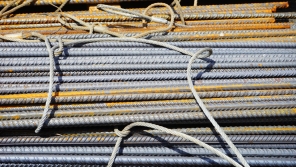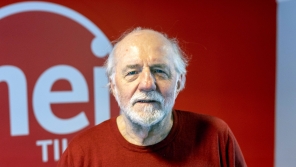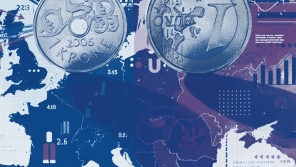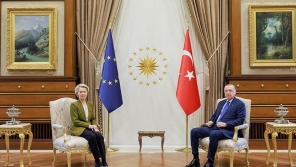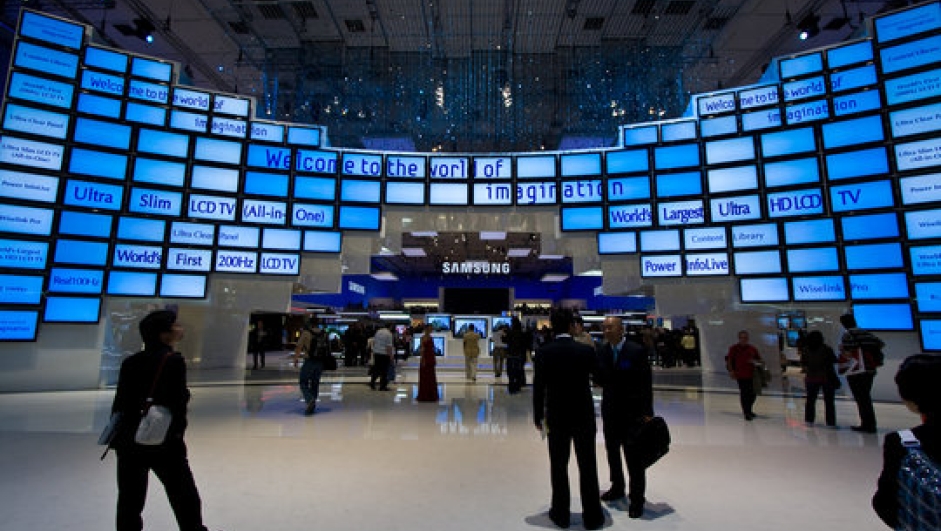
NtEU Facts: The agreement between EU and South Korea as an example
Is there a viable alternative to the EEA Agreement that can be based on more modern trade and integration practices on the EU’s part?
This slightly abbreviated text is an excerpt from the report, Norway and the EEA: Trade Patterns and frameworks for mutual trade in the EEA Agreement (Menon Business Economics, 2013), and has also been published in Vett 1-2015.
To identify this kind of practice, we have chosen to focus on the most advanced and comprehensive bilateral trade agreement between the EU and another country (with the exception of the EEA Agreement). We therefore turn to the agreement signed in 2011 between the EU and South Korea. Internationally, this bilateral agreement is seen as very extensive, and probably the most comprehensive of all bilateral agreements with the exception of the agreement structure of the NAFTA partnership.
The agreement between the EU and Korea (also called KOREU) covers the following areas:
- Free trade in goods
- Free trade in services
- Public tenders and procurement
- Protection of intellectual property rights (IPR)
Trade and tariffs
The trade Agreement (FTA) between South Korea and the EU removes all duties on industrial goods and on a significant proportion of agricultural commodities. In total, 99 percent of all tariffs are eliminated over a five-year period. The agreement also incorporates a lot of the legislation that the EU has developed relating to countries of origin (RoOS). This legislation is increasingly important in a world that is globalising, where the production of goods is divided and spread between a number of countries. The EU has taken a big step in the direction of liberalisation in this area by accepting content percentages from Korea as low as 55 per cent. For cars, the agreement is as low as 40 percent.
Technical trade barriers
One of the most important parts of the agreement involves the removal and control of technical trade barriers, such as requirements for national deliveries, export restrictions, sanitary and phytosanitary measures (SPS) and other trade-relevant regulations that discriminate against suppliers from different countries. The agreement paves the way for increased transparency in connection with the development of the parties' regulations and standards. The agreement allows the parties to a greater extent to discuss and agree common and coordinated changes before new rules are implemented. The agreement has specific chapters relating to the removal of technical trade barriers in the areas of consumer electronics, cars and car parts, pharmaceutical products and chemical products. These four areas are especially relevant to trade between the EU and Korea, and they have therefore been given particular attention. And, not least, these areas concern matters relating to safety standards and accreditation procedures.
IPR: Intellectual Property Rights
The agreement has a chapter on the protection of intellectual property rights. The chapter has a broader basis than the TRIPS Agreement from 1994 under the WTO. The agreement deals with copyright, trademarks, geographical indicators and country labelling, designs and patents. An extensive part of the chapter is devoted to protection of geographical tagging (geotags), which is in many contexts particularly important to EU countries.
Public Procurements
Both the EU and Korea confirm the concessions granted under the WTO GPA framework relating to public procurements. The agreement also entitles suppliers from the countries to tender for so-called BOT contracts whereby private operators build and operate infrastructure, before later signing ownership over to the authorities after a period. We often find these types of contracts in connection with power production, water supply and wastewater projects, transportation etc. This enables companies in these industries to gain access to these markets.
Competition
The agreement goes a long way towards developing a common policy framework for competition, and particular emphasis has been placed on regulation of the use of subsidies for businesses, particularly in the manufacturing sector, with the exception of fish and agricultural products. The agreement sets strict requirements for the reporting of subsidies in various sectors. This is of particular interest to the shipbuilding industry. The subsidy provisions in the agreement do not cover services, but the agreement contains clauses that are intended to stimulate lower subsidies in this area.
Trade in services
In the service area, the agreement is the most ambitious of all of the EU's bilateral trade agreements. It goes much further than the WTO's GATS agreement, particularly in the areas of finance, telecommunications, maritime services and e-commerce. The agreement uses the so-called ‘negative list approach’, where one assumes that all services are covered by the agreement except for types of services that are specifically mentioned. The EU has only included a few exceptions on its list of services. They include medical services, education and audio-visual services, primarily because of the central role the public sector plays in providing such services. It is worth noting that Korean law firms are allowed to provide services in the EU and to employ EU lawyers, if they so wish.
Investments
The agreement does not contain a chapter on investments and nor has it incorporated any state-investor dispute mechanism. There is a mechanism for disputes of this kind if an EU country has signed a bilateral investment treaty (BIT) with Korea, which 20 countries have done. For direct foreign investments, the agreement only contains clauses that entitle the parties to review new legislation to ensure that it does not hinder the movement of capital between the EU and Korea.
Dispute mechanisms
The mechanism for dispute resolution in the agreement is based on the WTO dispute resolution mechanism, but it is assumed that it will be able to handle issues much faster than the WTO. The agreement contains a number of clauses concerning urgent procedures, particularly for sectors and industries that are sensitive to changes in policies and regulations (such as cars, car parts).
However, the agreement will not cover free movement of labour and free movement of capital. Nor will it cover all sector-specific, mutually binding agreements, for example in mobile telephony, transportation, regulation of financial transactions etc. It is also important to note that the agreement only to a limited extent contains supranational dispute resolution mechanisms, where persons or businesses can litigate against other persons, companies or public authorities. In other words, a lot would change if the EEA Agreement were to be replaced by a bilateral trade agreement of the kind that the European Union and Korea have negotiated.
The key question, then, is to what extent the deviations from an EEA agreement would have a great impact on that part of Norwegian business and industry that actually accounts for the bulk of Norway’s exports to the EU. This is the topic of the next chapter.
Consequences for the different industries of a transition to a modern free trade agreement
If the EEA Agreement were to be terminated, it is precisely those industries that are most strongly linked to the EEA Agreement that would be most affected. In this chapter, we will briefly look at some key issues that would arise if a bilateral trade agreement were chosen to replace the EEA agreement.
Process industry
The needs of the process industry would largely be met through such an agreement, since the industry primarily depends on free trade in industrial products. The use of state aid, export subsidies etc. is increasingly governed by other agreements and will probably not be a big problem. But here it should be mentioned that practices can change, especially in light of China's policy in this area, where subsidies affect global competition in many of the markets in which the process industry operates. Scrapping the EEA Agreement could also conceivably affect protection against competition as a result of the loss of the EU's competition regulations, although in this area we could probably implement the same policies as the EU.
Seafood
As the seafood industry is only part of the EEA Agreement to a limited extent, a transition to a bilateral trade agreement will have little impact on this industry's exports to the EU. In the veterinary area, it will be necessary to make a unilateral adjustment of the regulations to ensure that Norwegian suppliers still have access to European markets.
Maritime and offshore supply industry
The share of this industry's production that goes to the EU is declining. At the same time, however, there is good reason to emphasise that this industry needs free movement of labour and services in order to operate effectively on the European market in fields such as installation, modification, consulting and specialised services. That said, we see that suppliers from outside the EU (such as Korea, China and Singapore) are able to compete extensively with European firms in these markets.
Technology industry
This industry's most important prerequisite – free trade in industrial goods – will be met by a bilateral trade agreement. IPR and standards could be problematic, but the KOREU Agreement is intended to regulate and harmonise this area. A unilateral adjustment would solve part of this problem.
Consumer goods industry
Everything besides foodstuffs will manage fine with a bilateral agreement.
Business services and finance
This sector is highly vulnerable to an exit from the EEA Agreement. This is a large and complex industry and many of its sectors are heavily regulated through the EEA Agreement. The industry has a number of mutual approval arrangements and harmonisation practices that a bilateral agreement will not take into account. It is also uncertain whether unilateral adaptation to all these directives and regulations would fully compensate. It is also important to underline that this is an industry that will become even more internationalised in future, not least through acquisitions and mergers. With such a development, the need for a coordinating EEA Agreement will increase.
International shipping
Some uncertainty, but probably no particularly great effects of switching to a trade agreement.
Tourism
Will hardly be affected by switching to a bilateral agreement. The transport industry could suffer as a result of the termination of mutual approval arrangements. This could increase transportation costs for Norwegian companies.



